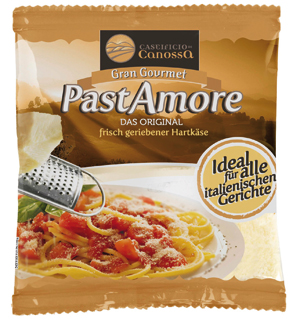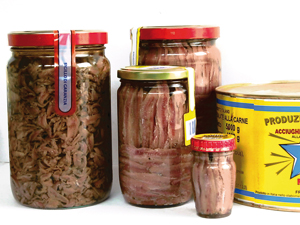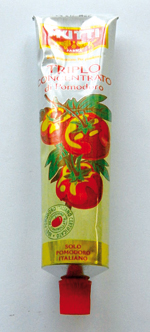Packaging food preserves
DATA in brief, the numbers and characteristics of the packaging of frozen foods, vegetable and ichthyic preserves. Plinio Iascone
 The projections made in late 2011 by the Federalimentare Research Centre on 2012 the food sector speak of a slight increase in production (+0.8% annually), stable domestic consumption (+0.1%) and exports showing positive figures (+10% a year in value). But, as Ferrua Philip, president of Confindustria member association states «exports may not be enough to stay the stagnation of domestic markets and the increase in VAT will threaten the recovery of consumption in the short term».
The projections made in late 2011 by the Federalimentare Research Centre on 2012 the food sector speak of a slight increase in production (+0.8% annually), stable domestic consumption (+0.1%) and exports showing positive figures (+10% a year in value). But, as Ferrua Philip, president of Confindustria member association states «exports may not be enough to stay the stagnation of domestic markets and the increase in VAT will threaten the recovery of consumption in the short term».
Also, one should be aware that, in the future, the Italian food industry will only succeed on foreign markets by winning the competitive challenge, standing up to very competitive countries such as China, India and Latin American first and foremost.
It is interesting to highlight the most significant data showing trends processed by Federalimentare for 2012.
Exports are up ( forecasts speak of an annual +10% between 2011 and 2012), but slightly down on the 11% registered in the first half of 2011.
Against this, domestic consumption is expected to show close to zero growth (+ 0.1%).
The increase of VAT to 21% on food will hit the Italian families with an extra outlay of over 600 million euros, and risks jeopardising any prospect of a revival of domestic consumption, impacting strongly on the activities of the food chain, from agriculture to industry up to distribution.
The outlook, therefore, delineates a recovery too slow for the needs of the sector.
Taking a closer look at Federalimentare Study Centre estimates, in the light of a strong and continuing stagnation of the domestic market, only partially offset by growth in foreign markets, the Italian food industry production in 2011-2012 is expected to remain at a slim average growthrate of 0.8% a year, below the figure for the decade 2000-2010 when the growthrate stood at 1.2% per year.
Packaging: materials and characteristics
In addition to performing traditional functions of use (keeping the product in the best conditions, facilitating transport and storage), packaging is increasingly called upon to act as a marketing tool. This conception leads to frequent innovation, both in terms of types, as well as in terms of shape and graphics within the same type.
Frozen foods. Initially frozen food was packaged in folding cases plus in some cases with a plastic film in contact with the product. Following this polylaminate flexible bags were introduced, that have gradually gained significant market shares. There are two common solutions: single bag or bag + plastic tray. The growth in consumption of ready meals has led to the use of aluminium trays.
 Ichthyic products. Tuna, sardine and anchovy preserves were "born" in a metal can (initially only tinplate); for the first two fish types, the metal can is still the most widely used form of packaging, while anchovies are mainly packaged in glass jars.
Ichthyic products. Tuna, sardine and anchovy preserves were "born" in a metal can (initially only tinplate); for the first two fish types, the metal can is still the most widely used form of packaging, while anchovies are mainly packaged in glass jars.
In time the aluminium can was introduced alongside the tin can, the former having become the most widely used today. All metal cans currently have an easy-open or easy-peel lid.
In recent years glass jars have gained position, while flexible polylaminate bags have definitely lost their momentum.
Fruit in syrup and legumes. For these products the historic packaging, still widely used today, is the tin can.
Over the years however, other packaging options have gained hold, namely glass jars and containers and in particular cellulosic laminate containers.
 Tomato derivatives. For a long time they were only packed in tin cans. With the marketing of different types of tomato derivatives, other types of packaging have gradually become established that have eroded the area of the steel can. The latter, currently only reigns supreme in the peeled segment, the less dynamic in growth terms. For purees, pulp, concentrates and enriched solutions many different solutions are available: cans and glass bottles, polylaminate flexible converter bags, laminate cellulose containers etc.
Tomato derivatives. For a long time they were only packed in tin cans. With the marketing of different types of tomato derivatives, other types of packaging have gradually become established that have eroded the area of the steel can. The latter, currently only reigns supreme in the peeled segment, the less dynamic in growth terms. For purees, pulp, concentrates and enriched solutions many different solutions are available: cans and glass bottles, polylaminate flexible converter bags, laminate cellulose containers etc.
Jam. Glass predominates, with a share of 83%. The other packaging solutions are available in single-dose containers in plastic or aluminum and the jar in BSE, historical container now with a very low share.
Vegetables and traditional pickles (excluding pasta seasoning). The glass jar with twist off cap in BSE accounts for 75.5% of the market. The BSE (for products intended for catering), representing 20% and the flexible polylaminate bag, newly adopted but with a use trend on the increase, has a market share of 4.5%.
The packages listed in the areas examined are primary packaging; of course, in all areas, while secondary (cluster of cardboard) and transport (corrugated boxes, shrink film and pallet) packaging are also used.
Plinio Iascone
Istituto Italiano Imballaggio

















